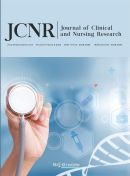Abstract
Objective: To explore the relationship between symptomatic functional status and quality of life of patients with low back myofascial pain syndrome (MPS). Methods: From July 2021 to June 2022, 106 patients with low back myofascial pain syndrome in the Affiliated Hospital of Hebei University were selected as the research subjects. A total of 106 MPS patients were investigated with general information questionnaire, Memory Symptom Assessment Scale (MSAS), Oswestry Disability Index (ODI) and Short Form Questionnaire (SF-36). The relationship between quality of life and symptom distress and dysfunction was observed and analyzed based on symptom distress and dysfunction scores, SF-36 scores, and so on. Results: The total score of MSAS was 1.79 ± 0.91. The overall symptom distress of the patients was moderate. The ODI score was 18.46 ± 5.95. The functional disability of the patients was classified as moderately impaired. The MSAS-PHYS, MSAS-PSYCH, MSAS-GDI three scale scores were 2.14 ± 0.75, 1.69 ± 0.88, 1.55 ± 0.46, respectively, and the variability of the three scales is relatively large; the dimension scores were significantly lower than those of the conventional scoring models, and P < 0.05, indicating a statistical difference; the scores of each dimension of the patient’s quality of life were compared with the scores of symptom distress and functional status. The higher the symptom distress score, the lower the quality of life, with P < 0.05, indicating a statistical difference; the higher the score of each dimension of functional status, the better the quality of life, showing a positive correlation, and P < 0.05, indicating a statistical difference. Conclusion: MPS patients face a number of physical and psychological symptoms, and their functional status is limited. Nursing staff should implement health education and intervention measures according to the actual situation of the patients, so as to improve the quality of their lives.
References
Yang T, 2022, Observation on the Effect of Pricking Collaterals and Bloodletting Combined with Acupuncture in the Treatment of Lumbar Back Myofasciitis. Clinical Medicine, 42(05): 113–115.
Yang S, 2022, Research on the Effect of Acupuncture with Acupuncture on the Treatment of Lumbar Back Myofasciitis. System Medicine, 7(10): 83–87.
Hu B, Chen P, 2022, Research Progress on the Treatment of Lumbar Back Myofasciitis by External Therapy of Traditional Chinese and Western Medicine. Xinjiang Chinese Medicine, 40(02): 117–120.
Lin W, Peng X, Zhang L, et al., 2022, Clinical Observation of Internal Heat Acupuncture in the Treatment of Lumbar Back Myofasciitis. Journal of Practical Chinese Medicine, 38(03): 486–487.
Qiu Y, Zhao X, Ma H, et al., 2022, Treatment of 36 Cases of Lumbar Back Myofasciitis with Z-type Acupuncture. Chinese Journal of Orthopedics and Traumatology, 30(01): 50–52 + 56.
Sun W, Ma G, 2021, Observation on the Effect of Micro-Needle Knife combined with Du Meridian Stagnation Acupuncture Therapy in the Treatment of Low Back Myofascial Pain Syndrome. China Primary Medicine, 28(11): 1696–1699.
Chen G, Li Y, Yong Q, et al., 2021, Prof. Sun Qibin’s Experience in the Treatment of Low Back Fascia Pain Syndrome with “Lifting Manipulation”. Clinical Research in Traditional Chinese Medicine, 13(30): 133–134+138.
Ma J, Yu W, Xu L, 2021, Analysis of Nursing Effect Observation of Acupoint Selection Along the Meridian Combined with Balanced Cupping in the Treatment of Lumbar Back Myofasciitis. Xinjiang Chinese Medicine, 39(04): 59–62.
Chen S, Zong Z, Yu J, 2021, Effects of Acupuncture Combined with Moxibustion on the Daily Living Ability of Patients with Lumbar Back Myofasciitis. China Medical Innovation, 18(23): 97–101.
Yang X, Yang Y, 2021, Interventional Effect of Fascial Space Water Needle Knife on Low Back Myofasciitis. Journal of Liaoning University of Traditional Chinese Medicine, 23(11): 175–178.
Mo W, 2021, Clinical Observation of Zhuang Medicine Meridian and Tendon Therapy in the Treatment of Lumbar Back Myofasciitis, dissertation, Guangxi University of Traditional Chinese Medicine.
Deng C, Xu Z, Yang Y, 2021, Research Overview of Zhuang Medicine Meridian and Tendon Therapy in the Treatment of Low Back Myofascialitis. Chinese Ethnic Folk Medicine, 30(09): 68–70 + 91.
Gao H, Xiong J, 2021, Clinical Research Progress of External TCM Therapy for Low Back Myofasciitis. Xinjiang Traditional Chinese Medicine, 39(02): 92–95.
Liu W, Dai F, Zhang W, et al., 2020, Effects of Internal Heat Acupuncture Combined with Extracorporeal Shock Wave on the Curative Effect of Lumbar Back Myofasciitis and Serum SP and TNF-? Levels. System Medicine, 5(17): 34–37.
Zuo W, 2020, Efficacy of Spinal Nerve Posterior Branch Block in the Treatment of Patients with Lumbar Myofasciitis. Medical Equipment, 33(14): 117–118.
Liu X, 2020, Effects of Pricking Collaterals and Bloodletting Combined with Moxibustion Therapy on Pain Symptoms and Dysfunction Index in Patients with Lumbar Myofasciitis. Primary Medicine Forum, 24(14): 1938–1939.
